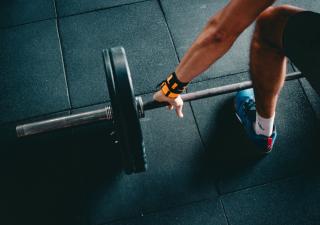We talk a lot about the benefits of injury. The advantages we can find if we choose to perceive injury as an opportunity, not an invitation to stop training.
In our eBook series, ‘Exercising with an Injury’ we talk more about injury as an opportunity:
“Injury is also an opportunity. It’s an opportunity to work on weaknesses (if they don’t involve the injured body part) and an opportunity to focus on exercises and movements that are not impacted by the injury. The limitations placed on you by the injury mean you can shift your focus and devote extra time, effort and resources to other areas of your training.
Need other ideas for where to shift your focus when injured? Maybe it’s an opportunity to further develop your strengths, build an otherwise unattainable level of work capacity and cardiorespiratory endurance, improve your technique, or build and develop new skills. All these things are opportunities that, without injury, you may not have considered.
Viewing injury as an opportunity comes down to ‘framing’ – how you respond to the injury. You control your response to the injury and the actions and behaviours you choose to pursue. By re-framing injury as opportunity, you will benefit mentally and physically.”
But I think in the post- injury period, when you’re rebuilding your body and your abilities, there’s also an opportunity to rebuild your movement patterns – an opportunity you may not have recognised before your injury.
In an uninjured state, our drive for progress (often short term progress) can cloud our focus. We incorrectly fixate on numbers and reps. Adding kilograms to our snatch or reps to our unbroken pull-ups becomes our focus. As is human nature, we crave the short term ‘feel good’ dopamine hit that comes from personal bests. And unfortunately, this means our long term progress is often sacrificed for short term gain.
Effectively, we’re in a battle with both our drive for improvement, and our ego. Of course, neither of these things is inherently bad, we just need to point them in the right direction.
So how can injury help?
Injury forces us (or at least should force us) to reduce loads and reps. It removes the option to be driven by our ego, because we have an injury-imposed limitation that overrides our desire for future-impeding short term gain. Injury forces us to reduce intensity, and with intensity and mechanics (all too often) mutually exclusive, we get the opportunity to shift our focus to correcting our mechanics. It forces disciplined movement.
Gradually progress loads as the injury allows, ensuring technique progresses as the injury recovers.
So as you rebuild yourself post- injury, don’t miss the opportunity to rebuild a better self. Every rep is an opportunity for improvement. Better mechanics, better consistency. Be brave and future- focused enough to take a short term ego hit to be rewarded by long term gain.
You’ve got no time to waste, because if you fall back on your old ways, the opportunity will be lost.





